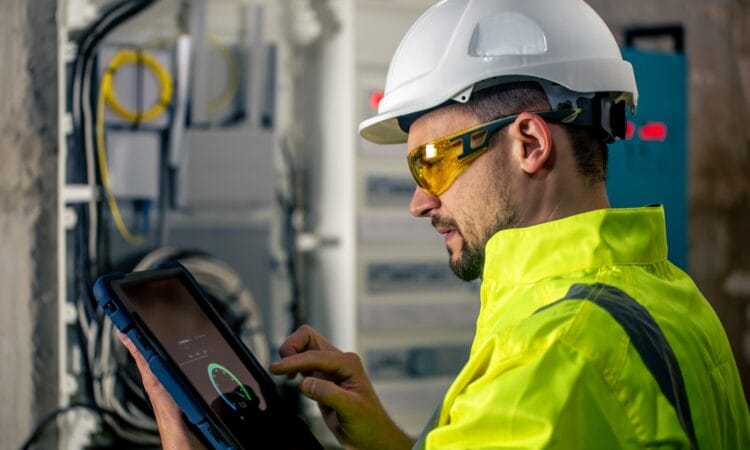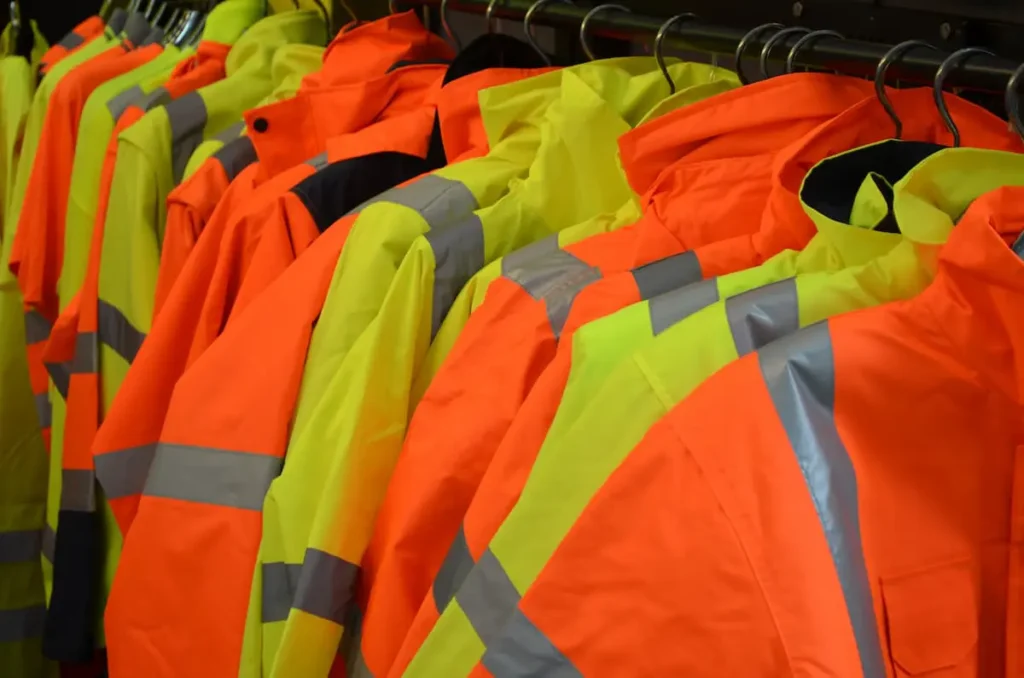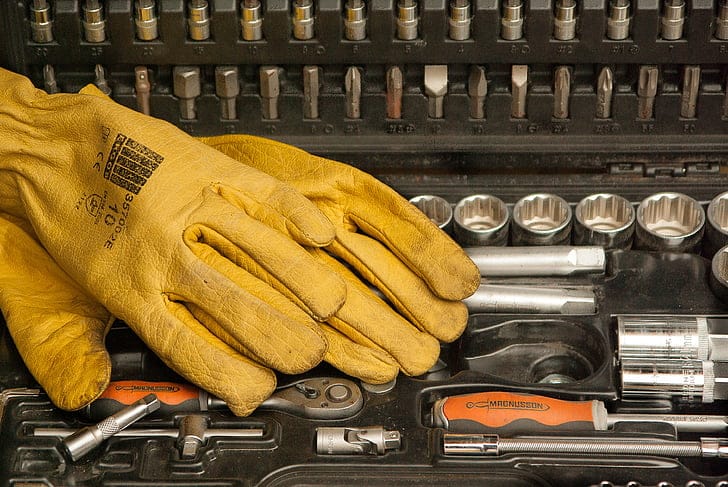
Three years ago, if you had told a PPE buyer that artificial intelligence would help them cut lead times, avoid stockouts, and even warn them about a raw material price spike months before it happened, they might have smiled politely and changed the subject.
But in 2025, AI is no longer science fiction—it’s becoming an invisible but powerful part of competitive supply chains. I’ve sat with buyers who used to rely on “gut feel” for order volumes and now have AI dashboards showing them precisely which SKUs will run low and which ones will pile up in the warehouse.
I’ve seen AI flag that a shipment from a nitrile glove supplier in Malaysia would miss a European port strike window—allowing the buyer to reroute in time. I’ve also seen AI predict a polyester yarn price increase three months in advance, giving a workwear importer a head start on buying fabric before costs jumped.
The message is clear: in PPE sourcing, AI isn’t replacing buyers—it’s making them sharper, faster, and better prepared.
AI in PPE supply chains applies predictive analytics, demand forecasting, supplier performance tracking, and logistics optimization to reduce costs and improve reliability. Benefits include fewer stockouts, better price control, and faster response to market changes. Integrating AI into ERP or WMS systems helps buyers plan purchases, monitor suppliers, and adapt shipping strategies in real time.
Why AI Matters for PPE Buyers
1. Predictive Demand Forecasting
AI doesn’t just look at last year’s sales—it blends historical data with weather trends, economic indicators, and even tender cycles to forecast demand.
- Example: A UK safety gear distributor used AI to forecast winter hi-vis jacket demand with 92% accuracy. They cut excess stock by €20,000 and still met all orders during a colder-than-average winter.
- Regional Note: In Japan, AI demand models now include typhoon forecasts to anticipate spikes in waterproof PPE orders.
2. Supplier Risk Monitoring
AI can continuously score suppliers based on real-world performance: late shipments, defect rates, missing compliance documents.
- Example: A Canadian importer’s AI dashboard flagged a spike in late deliveries from one glove supplier. They reduced their exposure from 60% of orders to 25%—just before the supplier had a three-week production halt.
- Regional Note: In Southeast Asia, some buyers are using AI to track factory-level energy blackouts that might affect production schedules.
3. Raw Material Price Prediction
AI models track commodity market data, shipping costs, and weather patterns affecting crop yields or chemical feedstock availability.
- Example: A US buyer switched 30% of glove orders from pure nitrile to a nitrile-latex blend two months before nitrile prices jumped 12%, saving $18,000 on the quarter.
- Regional Note: In Europe, some textile buyers link AI alerts to automatic “buy” orders on polyester futures contracts.
4. Customs and Logistics Optimization
AI tools can scan live port congestion data, customs clearance times, and seasonal freight rate trends.
- Example: A Spanish PPE wholesaler used AI to identify that a certain Mediterranean port cleared goods 1.5 days faster on average during summer—saving €6,000 in storage fees that year.
- Regional Note: In the US, AI freight routing tools are helping buyers shift from congested West Coast ports to Gulf and East Coast alternatives during peak seasons.
Real-World Buyer Cases
Case #1 – European PPE Wholesaler
Integrated AI forecasting into their ERP. Reduced average stock holding days by 22% while improving order fulfillment rates from 94% to 98%. The investment paid for itself in nine months.Case #2 – Japanese Workwear Importer
Ran an AI simulation comparing freight costs and lead times from Vietnamese vs. Chinese suppliers. Shifted 30% of volume to the route with fewer customs delays, saving ¥4.8 million annually.Case #3 – US Industrial Supply Chain Manager
Combined AI-driven lead time prediction with supplier risk scoring. Avoided multiple emergency air freight orders, cutting urgent logistics spending by 35%.Case #4 – Middle East PPE Distributor
Used AI to track compliance certificate expirations. Prevented two large shipments from being held at port due to outdated EN certification.
AI Features That Matter for PPE Supply Chains
Here’s where AI delivers the most value for B2B PPE buyers, and how each feature can directly impact your bottom line.
| Feature | Benefit | Example Use Case |
|---|---|---|
| Predictive Demand Forecasting | Cuts overstock, prevents stockouts | Plan hi-vis jacket orders based on historical sales + weather predictions |
| Supplier Performance Scoring | Improves supplier allocation | Shift orders away from suppliers with rising defect rates |
| Commodity Price Prediction | Avoids sudden cost spikes | Buy nitrile gloves ahead of forecasted price jump |
| Logistics Route Optimization | Reduces freight costs and delays | Choose ports with faster customs clearance |
| Automated Compliance Tracking | Prevents port holds and rejections | Get alerts 30 days before a certification expires |
Implementation Steps for Buyers
-
Audit Your Data
Make sure your sales, inventory, and supplier data are accurate—AI is only as good as the information it’s fed. -
Define Your Goals
Decide whether you want AI to focus on demand planning, cost reduction, or supplier monitoring. -
Choose the Right Platform
Look for AI tools that integrate with your ERP/WMS. Many SaaS solutions are available without heavy IT investment. -
Run a Pilot Program
Test with one product category or one supplier to measure results before full rollout. -
Train Your Team
Staff must understand how to interpret AI recommendations and act on them.
ROI Calculation Example
Here’s a real-world style calculation for a mid-sized PPE importer:
| Category | Annual Impact | Value (€) |
|---|---|---|
| Reduced Overstock | 15% less warehouse holding | 24,000 |
| Lower Urgent Freight Costs | 35% fewer emergency shipments | 9,000 |
| Raw Material Cost Savings | Pre-bought cotton ahead of price rise | 12,000 |
| Compliance Avoidance Costs | No shipment rejections | 5,000 |
| Total Annual ROI | — | 50,000 |
Note: This ROI was achieved in the first year after a €15,000 software and integration spend.
Risks and How to Mitigate Them
-
Data Quality Risk
Mitigation: Set monthly audits for key data points like lead times, defect rates, and SKU codes. -
Over-Reliance on AI
Mitigation: Treat AI as a decision-support tool, not a decision-maker. -
Integration Costs
Mitigation: Start with cloud-based tools to avoid heavy upfront IT expenses. -
Staff Resistance
Mitigation: Show quick wins from pilot projects to build confidence.
Common Procurement Mistakes with AI
- Ignoring Training – Without understanding the output, teams may disregard valuable insights.
- Trying to Apply AI to Everything at Once – Better to start with a single high-impact use case.
- Not Updating AI Models – Market conditions change, and so must the algorithms.
- Neglecting Supplier Collaboration – AI works best when suppliers share timely and accurate data.
Cost-Benefit Snapshot
| Strategy | Annual Saving Potential | Example |
|---|---|---|
| Demand Forecasting | 5–15% inventory cost reduction | Reduced slow-moving stock |
| Supplier Risk Scoring | Avoids 1–2 major delays per year | Shifted orders early |
| Commodity Price Prediction | 3–7% raw material savings | Bought nitrile early |
| Logistics Route Optimization | 2–5% freight cost reduction | Used faster port clearance |
| Compliance Tracking | Avoided €3–5k in port penalties | Renewed certs early |
Buyer FAQ
Q1: Do I need in-house developers to set this up?
A: No—many providers offer ready-to-use platforms that integrate with common ERP systems.
Q2: Can AI help with tender bidding?
A: Yes—by predicting material costs and lead times, you can submit more accurate bids.
Q3: How fast can AI flag supplier issues?
A: In some cases, within 24 hours of data anomalies appearing.
Q4: Is AI only for large companies?
A: Not anymore—subscription pricing has made AI accessible to mid-sized importers.
Procurement Checklist
- [ ] Audit sales, inventory, and supplier data quality
- [ ] Choose a single high-impact area for AI pilot
- [ ] Select a platform that integrates with your ERP/WMS
- [ ] Involve suppliers in data sharing agreements
- [ ] Train staff before rollout
- [ ] Monitor and adjust AI models quarterly
- [ ] Track ROI to justify scaling up
Conclusion
AI is already proving itself in PPE supply chains—saving money, reducing delays, and improving buyer confidence. The key isn’t to “go high tech” for its own sake, but to focus AI on the problems that hit your bottom line hardest.
In 2025, the smartest buyers aren’t the ones chasing the lowest quote—they’re the ones using the best data to make the best decisions, faster.
📩 Need AI-friendly supply chain solutions for PPE?
Email: [email protected]
🌐 www.workwearsolutions.net
Zion Zhang
Recent Posts
 Technology in PPE: How Smart Features Are Changing Buyer Expectations2025年8月9日When I first saw a “smart helmet” at an expo in 2018, I […]
Technology in PPE: How Smart Features Are Changing Buyer Expectations2025年8月9日When I first saw a “smart helmet” at an expo in 2018, I […] Sustainability in PPE: How Eco Standards Are Reshaping Buyer Decisions2025年8月9日Five years ago, “eco-friendly PPE” was a novelty—something […]
Sustainability in PPE: How Eco Standards Are Reshaping Buyer Decisions2025年8月9日Five years ago, “eco-friendly PPE” was a novelty—something […] Post-Pandemic PPE Demand: What Buyers Should Expect in 2025 and Beyond2025年8月9日If you were in PPE procurement during 2020, you probably […]
Post-Pandemic PPE Demand: What Buyers Should Expect in 2025 and Beyond2025年8月9日If you were in PPE procurement during 2020, you probably […] Compliance and Certification Updates: What PPE Buyers Need to Know in 20252025年8月9日If you’ve been in PPE sourcing long enough, you’ve probably […]
Compliance and Certification Updates: What PPE Buyers Need to Know in 20252025年8月9日If you’ve been in PPE sourcing long enough, you’ve probably […] Regional Sourcing Shifts: Where PPE Production is Moving in 20252025年8月9日If you’ve been sourcing PPE for a decade, your mental map […]
Regional Sourcing Shifts: Where PPE Production is Moving in 20252025年8月9日If you’ve been sourcing PPE for a decade, your mental map […] From Function to Fashion: How Workwear is Entering the Mainstream2025年8月9日Ten years ago, the idea of wearing a hi-vis jacket or […]
From Function to Fashion: How Workwear is Entering the Mainstream2025年8月9日Ten years ago, the idea of wearing a hi-vis jacket or […]
CONTACT US
- Feel free to contact us any time. We will get back to you as soon as we can!
- +86-17330061805
